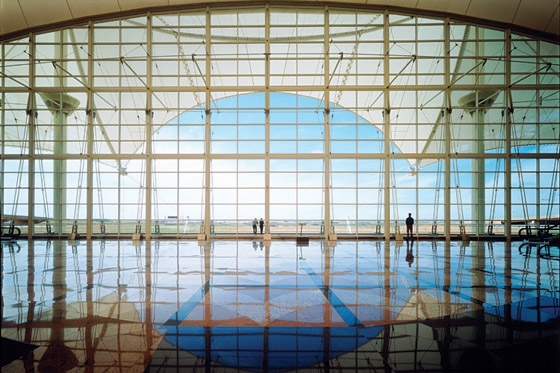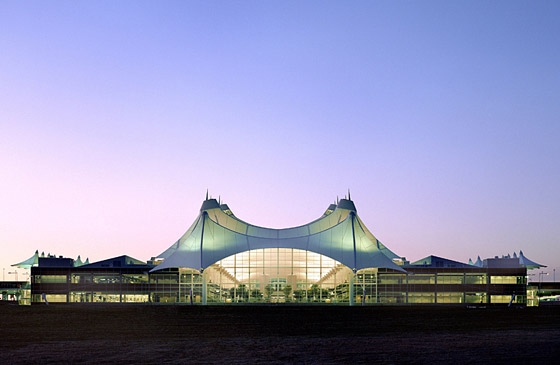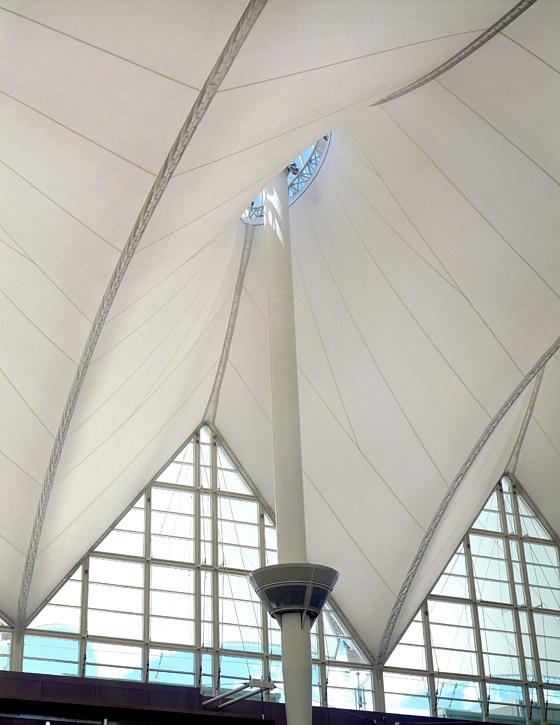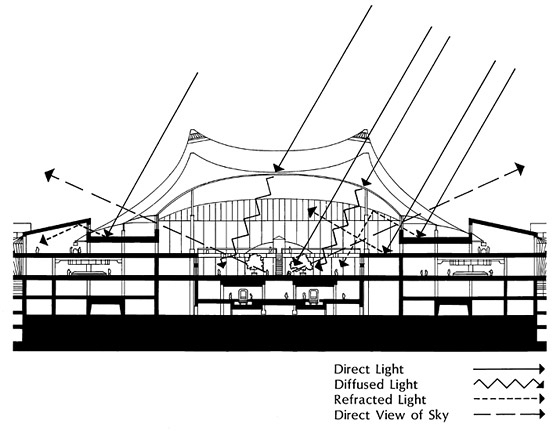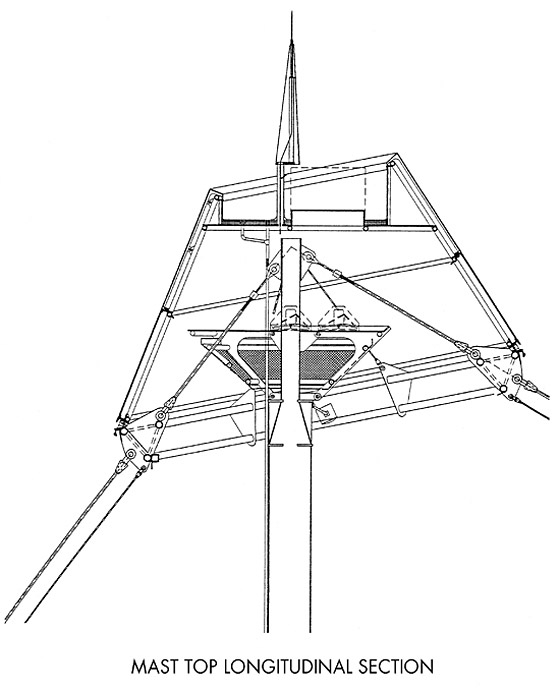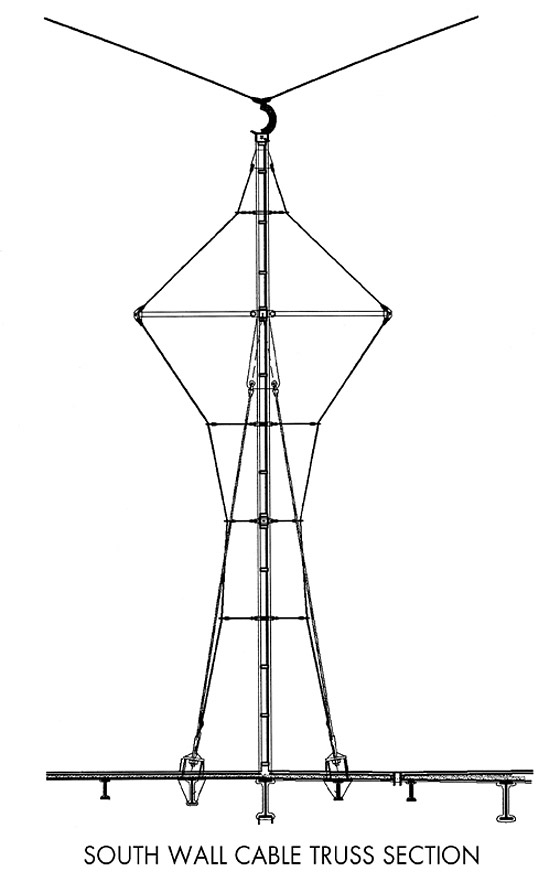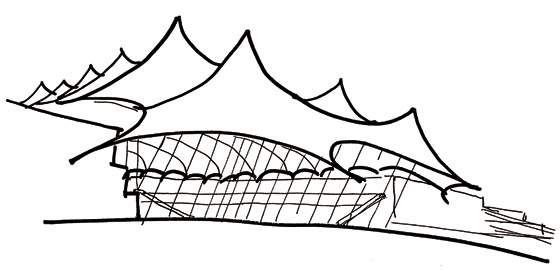A Truly Revolutionary Design
When the City of Denver handed Fentress the project, the airport was behind schedule, over budget and had an unfavorable design. Given a deadline of only three weeks to propose a new concept, Curtis Fentress worked tirelessly to design an innovative solution for Denver’s passenger terminal that was more affordable, faster to build, and most notably, an iconic design. The city wanted a symbol as much as a gateway, a building as visually memorable as it was functional.
Fentress’ design broke through the ceiling of a thirty-five year period in which airports had devolved into “people processors,” with cramped maze-like corridors and dingy fluorescent-lit interiors. The established “warehouse” design approach trended away from passengers’ needs. Having researched airport design for his masters thesis, Curtis Fentress, a protégé of I.M. Pei and the head of his own established firm, vowed to change this trend.
“We took all the mechanicals off the roof,” Fentress says, recalling the process of creating the world’s then-largest and most famous fabric roof. “This freed us to create a superlight cutting-edge structure, a canopy saturated with light. In doing so, it saved the airport thousands of tons of steel, USD$115 million in budget, and reduced the construction schedule by nine months.”
The sculpted roof canopy in Colorado evokes the majestic, snow-capped Rocky Mountains, the rugged covered wagons of pioneer settlers, and Native American teepees. For the first time, an airport became the symbol of a city and a region. The terminal’s peaked roof has become well-known and admired by travelers worldwide. A public survey by the American Institute of Architects ranked the terminal as #4 on its list of “Favorite American Architecture” landmarks. Business Traveler magazine readers voted Denver the “Best Airport in North America” for four years in a row, 2005-06-07-08.
As a pioneer in sustainable design, Fentress set the groundwork for an environmentally responsible airport design. Natural daylight bathes the interior of the terminal via numerous clerestories, curtain-walls (with a low-e coating) and the translucent roof. The roof material allows 10 percent of visible light to pass through the fabric during the day, while it reflects 90 percent of solar radiation in a high-altitude environment, reducing solar heat gain. The canopy drastically reduces the need for indoor lighting during daylight hours, capitalizing on Denver’s 300 days of sunshine per year. Afterwards, the airport installed a “solar farm” with 9,000 panels producing 3.5 million kilowatts of electricity. And Denver can claim two firsts in the area of sustainability: It is the first airport on the EPA’s Environmental Track Program, and the first airport to design and implement an environmental management systems program in the United States that meets the rigorous International Organization for Standardization 14001 International Certification Standard. In short, Denver’s airport leads the industry for sustainability at airports nationwide.
Denver International Airport’s transformational approach launched Fentress into the international arena of airport design. His airport terminals are known for being intuitive in navigation, streamlined, calming and outright beautiful—truly memorable. Over two decades of experience designing USD$13.5 billion and 4.8 million square meters of airport space, along with a reputation for excellence, have positioned Fentress Architects as a global leader in innovative and sustainable airport design. The studio has designed over 20 terminals, airport city master plans and design competitions, including some of the “world’s best” airport terminals, such as Incheon International Airport in Seoul, South Korea.
Terminal area: 2,000,000 sf




